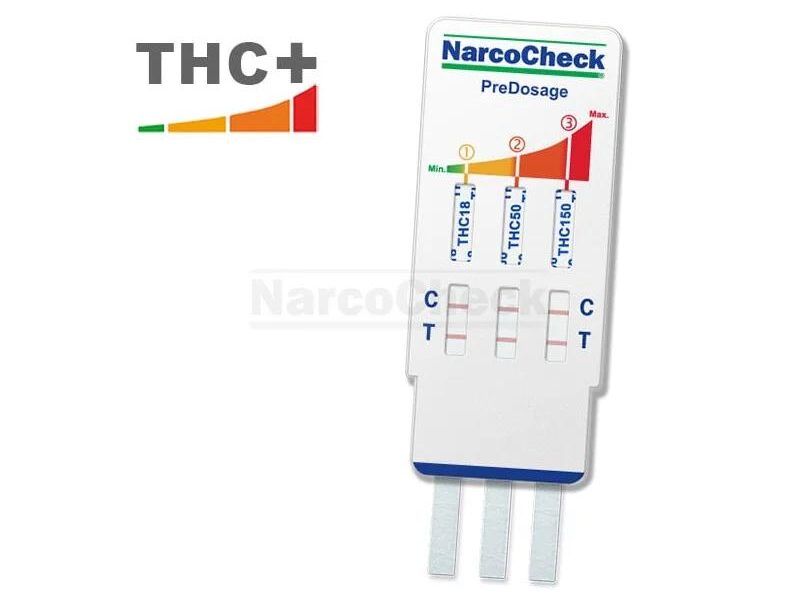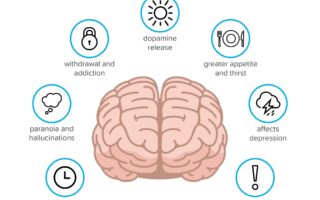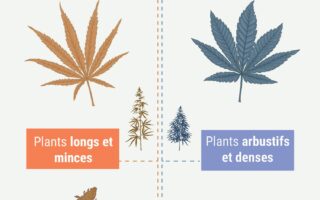In recent years, the landscape of cannabis has transformed dramatically, evolving from a largely stigmatized substance to a focal point of legal, medical, and recreational exploration. As the world embraces this newfound acceptance, understanding the nuances of cannabis use has become crucial—enter the cannabis test. These assessments serve as vital tools tailored to unravel the complexities behind cannabis consumption, its effects, and its potential benefits and risks. Whether you’re a seasoned user, a curious newcomer, or a healthcare professional seeking clarity in pathophysiology, cannabis testing offers insights that empower informed choices. In this article, we will delve into the world of cannabis tests, exploring their significance, types, methodologies, and the implications they hold for individuals and society alike. Join us on this informative journey as we uncover the layers of science and understanding within the realm of cannabis testing.
Table of Contents
- Understanding the Importance of Cannabis Testing for Quality Assurance
- Exploring Different Types of Cannabis Tests and Their Methodologies
- Navigating Legal Standards and Regulations in Cannabis Testing
- Best Practices for Consumers: Choosing Reliable Cannabis Testing Labs
- Q&A
- To Conclude
Understanding the Importance of Cannabis Testing for Quality Assurance
In the burgeoning cannabis industry, the significance of rigorous testing cannot be overstated. Testing ensures that products meet safety and quality standards, thus protecting consumers from harmful contaminants and ensuring consistent potency. Essential elements evaluated in cannabis testing include:
- Microbial Analysis: Identifies harmful bacteria, fungi, and other pathogens.
- Pesticide Residue: Ensures that chemical residues are within safe limits.
- Heavy Metal Testing: Detects toxic metals that can compromise health.
- Cannabinoid Profile: Assesses the potency and content of active compounds in products.
Quality assurance through cannabis testing instills consumer confidence and supports regulatory compliance. With a well-structured testing regimen, cultivators and manufacturers can optimize their processes, leading to improved product quality. Below is a simple overview of commonly tested elements:
| Test Type | Purpose | Frequency |
|---|---|---|
| Microbial Testing | Detect harmful pathogens | Every batch |
| Pesticide Testing | Check for chemical residues | Every harvest |
| Potency Testing | Determine cannabinoid levels | Per product |
| Heavy Metal Testing | Identify toxic substances | Quarterly |
Exploring Different Types of Cannabis Tests and Their Methodologies
When delving into the world of cannabis testing, one encounters a myriad of methodologies, each with its own strengths and applications. The most common types of tests include potency testing, which assesses the concentration of cannabinoids like THC and CBD, and terpene profiling, which identifies the aromatic compounds that contribute to the plant’s distinct flavor and effects. Other crucial tests evaluate contaminants, such as residual solvents, heavy metals, and microbiological impurities, ensuring that the cannabis products are safe for consumption. The implementation of these tests ensures that consumers receive high-quality products while adhering to legal standards.
The methodologies employed in these tests vary considerably. For instance, potency testing typically utilizes methods such as high-performance liquid chromatography (HPLC) and gas chromatography (GC). These techniques enable precise measurement of cannabinoid levels without the need for destructive sampling. In contrast, terpene profiling often employs headspace gas chromatography, allowing for the extraction of volatile compounds that define a strain’s aroma. Meanwhile, contaminant testing might include mass spectrometry for detailed analyses of residual solvents or bacterial contamination. Below is a small table summing up the methodologies:
| Test Type | Methodology | Purpose |
|---|---|---|
| Potency Testing | HPLC, GC | Measure cannabinoid concentration |
| Terpene Profiling | Headspace GC | Identify aroma compounds |
| Contaminant Testing | Mass Spectrometry | Analyze for safety/count impurities |
Navigating Legal Standards and Regulations in Cannabis Testing
In the rapidly evolving landscape of cannabis testing, understanding legal standards and regulations is essential for both laboratories and consumers. Compliance with state and federal laws ensures the integrity and safety of cannabis products. Key regulations often include:
- Certification Requirements: Laboratories must obtain certifications from relevant authorities to perform legal testing.
- Testing Protocols: Specific guidelines detail how samples should be collected, processed, and analyzed.
- Reporting Standards: Results must be reported in a clear and standardized format, allowing easy interpretation by consumers and regulatory bodies.
Moreover, staying informed about amendments and emerging policies is crucial for staying compliant in an industry characterized by its dynamic nature. It’s also important for labs to implement internal quality controls and engage in peer reviews to enhance credibility and reliability of their testing procedures. Below is a basic overview of key regulations:
| Regulation | Description |
|---|---|
| ISO/IEC 17025 | General requirements for the competence of testing and calibration laboratories. |
| State Compliance Testing | State-specific tests required for legal sale and distribution of cannabis. |
| GMP Guidelines | Good Manufacturing Practices that ensure consistent quality in cannabis production. |
Best Practices for Consumers: Choosing Reliable Cannabis Testing Labs
When it comes to selecting a cannabis testing lab, consumers should prioritize transparency and credibility. Look for laboratories that openly share their accreditation and certification status, ensuring they comply with industry standards. A reliable lab will provide detailed information about their testing methodologies and equipment used, helping you understand the science behind their results. Additionally, consumer reviews and testimonials can provide insight into a lab’s reputation and the quality of service they offer. Investigating the lab’s history and expertise in the industry is essential in establishing trust.
Furthermore, consumers should pay attention to the types of tests offered and the comprehensiveness of the results. Ideal testing should include a broad range of analyses such as cannabinoid profiles, pesticide detection, microbiological testing, and heavy metal screenings. Consider comparing labs based on the following criteria:
| Criteria | Lab A | Lab B | Lab C |
|---|---|---|---|
| Accreditation | ISO/IEC 17025 | ISO 9001 | ISO/IEC 17025 |
| Tests Offered | Full Panel | Pesticides Only | Full Panel |
| Turnaround Time | 3 Days | 5 Days | 4 Days |
| Customer Reviews | 4.8/5 | 4.2/5 | 4.6/5 |
Q&A
Q&A: Understanding the Cannabis Test
Q1: What is a cannabis test?
A: A cannabis test refers to the process of analyzing a sample of cannabis or a person’s biological fluids (like urine, blood, or saliva) to detect the presence of cannabinoids, such as THC (tetrahydrocannabinol) and CBD (cannabidiol). These tests can determine usage history, potency, and even the morphological characteristics of cannabis strains.
Q2: Why are cannabis tests important?
A: Cannabis tests serve multiple purposes. They can ensure product quality and safety in the cannabis industry, assist in legal compliance for employers and individuals, and can provide valuable information in medical settings. Additionally, they may help educate consumers about what they are using and its effects.
Q3: How is a cannabis test conducted?
A: The method of testing depends on the type of sample being analyzed. Common methods include:
- Urine tests: Most frequently used for employment screening. A urine sample is collected and analyzed, often using immunoassay techniques.
- Blood tests: These measure current impairment or recent usage and provide insight into the concentration of cannabinoids.
- Saliva tests: Increasingly popular for roadside testing, these are less invasive and can indicate recent use.
- Lab tests for products: Cannabis products undergo sophisticated lab analyses using techniques like high-performance liquid chromatography (HPLC) to determine cannabinoid content and check for contaminants.
Q4: How long can cannabis be detected in the body?
A: The detection window varies depending on the method used and individual factors such as metabolism and frequency of use.
- Urine: Can range from a few days for occasional users to several weeks for daily users.
- Blood: Typically detects THC for up to 4-6 hours after use, although it can be longer for regular users.
- Saliva: Generally remains detectable for 1-3 days.
Q5: What factors can influence the results of a cannabis test?
A: Several factors can play a role in test results, including individual metabolism, frequency of use, dosage, the type of cannabis strain, the method of consumption, and even hydration level at the time of testing.
Q6: Are there different types of cannabis tests?
A: Yes, cannabis testing can be categorized into two main types: screening tests and confirmation tests.
- Screening tests are preliminary tests that provide quick results but may have false positives.
- Confirmation tests (like gas chromatography-mass spectrometry) are more accurate and reliable and are often used to verify positive results from screening tests.
Q7: Can cannabis tests be fooled or are there ways to avoid detection?
A: While some consumers may attempt to use detox drinks or other methods to mask cannabis use, many testing methods are sophisticated enough to detect tampering. Ultimately, the most effective way to pass a test is to abstain from cannabis use.
Q8: What is the future of cannabis testing?
A: As cannabis legalization continues to grow worldwide, the demand for accurate and reliable testing methods will increase. Innovations in testing technology, such as portable devices that deliver on-site results and tests that differentiate between casual use and impairment, are on the horizon. Standards for product testing and consumer safety are also being refined as the industry matures.
Q9: Can I refuse a cannabis test?
A: This is often context-dependent. In many workplaces that conduct drug testing, refusal could result in employment consequences. Similarly, legal implications may arise concerning law enforcement situations. It’s essential to be aware of local laws and organizational policies regarding testing.
cannabis testing is a complex yet critical aspect of both the cannabis industry and legal frameworks. Awareness and understanding can ensure responsible usage, quality assurance, and compliance with regulations as society navigates this evolving landscape.
To Conclude
the realm of cannabis testing stands at the intersection of science, safety, and societal progress. As the landscape of legalization continues to evolve, understanding the intricacies of cannabis testing becomes invaluable for both consumers and producers alike. From precise cannabinoid profiling to rigorous contaminant screening, these tests serve a pivotal role in ensuring quality and potency while fostering informed choices. As we move forward into a world increasingly shaped by cannabis culture, the narratives crafted around these tests will undoubtedly influence perceptions, regulations, and innovations within the industry. So whether you’re a seasoned connoisseur or a curious newcomer, the insights gleaned from cannabis testing will undoubtedly be a guiding light on your journey through this vibrant world. Embrace the knowledge; it’s the first step toward a richer, more informed experience.


